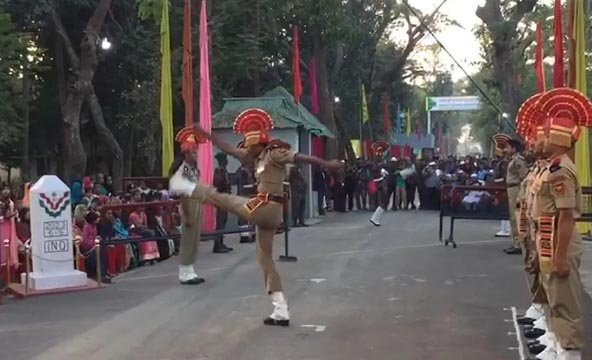Akhaura used to be the railway link for Agartala before Independence. The project, being implemented courtesy of an Indian loan, has been completed more than 90 per cent, and the work of laying the railway line is complete.
।। Samara Ashrat ।।
Bangladesh Prime Minister Sheikh Hasina is expected to inaugurate the Akhaura-Agartala rail line along with Prime Minister Narendra Modi in September. This project is creating considerable excitement among residents, and rightly so, since it could be a game-changer for both India and Bangladesh.
Goods can be transported from other seaports of India to states in the northeastern region via Agartala, using the Chittagong and Mongla ports of Bangladesh. This will help increase trade and facilitate the swift and cost-effective transportation of goods.
Akhaura used to serve as the railway link for Agartala before Independence. The project, implemented with the assistance of an Indian loan, has been completed over 90 percent, and the work of laying the railway line is finished.
The railway line, spanning 15.064 km in length — 5.05 km in India and 10.014 km in Bangladesh — will connect Bangladesh’s Akhaura through an international immigration station at Nischintapur on the outskirts of Agartala. This station will be a dual gauge station for passenger and goods interchange between India and Bangladesh.
The Memorandum of Understanding (MoU) was signed during Prime Minister Sheikh Hasina’s visit to India in January 2010. Following that, the project, which commenced in 2016, has been extended for the fourth time until June 2024. In other words, this project, which has been ongoing for 13 years, is finally coming to fruition.
The project was initially expected to be completed in 2020, but it was delayed due to land acquisition issues and the outbreak of the Covid-19 pandemic. The 15-km-long railway line will connect Bangladesh’s Akhaura through an international immigration station at Nischintapur along the India-Bangladesh border. Once operational, the railway will reduce travel time between Agartala and Kolkata from 31 hours to 10 hours, opening up opportunities for trade, tourism, and cultural exchange.
The Railway Ministry of India allocated Rs 153.84 crore for this project. The Ministry of DONER (Development of North Eastern Region) is funding the project, and Rs 708.74 crore of the estimated cost has already been provided and utilised. This railway link is part of the 16 transit routes that have been declared, enabling cargo transportation from Chattogram or Mongla port to Indian states.
Small yet impactful
Upon the completion of this railway link, two Indian states, Tripura and West Bengal, will be connected with Bangladesh. This new railway link will significantly reduce travel time between the Indian cities of Kolkata and Agartala. The train journey from Agartala to Kolkata, covering a distance of 500 km via Dhaka, will take around 16 hours. Once the project is finalised, the travel time between Agartala and Kolkata via Dhaka, currently around 31 hours, will be reduced to 10 hours.
The 15-km long railway link connecting Agartala with Gangasagar will play a crucial role in the overall development of the North Eastern region. Those from Mizoram, which is 150 km away, and those from Agartala will benefit from the current line.
India and Bangladesh have also signed an agreement allowing Indian traders to use Chattogram and Mongla ports in Bangladesh for goods transportation. This railway will not only increase the movement of the people of the two countries, it will also play a role in the import and export of goods from Chittagong port, resulting in a boost in trade and adding value to the economic development of both nations and states. Not only that, this rail line would boost the tourism sector of both of the countries. The new rail project will enhance relations between India and Bangladesh, and aid the growth of small-scale industries in the border area and boost tourism in the northeastern region. Facilitating faster export and import of commodities would benefit local producers in exporting their products outside the country.
(The author is a columnist specialising in South Asian Geopolitics and India-Bangladesh Relations)

